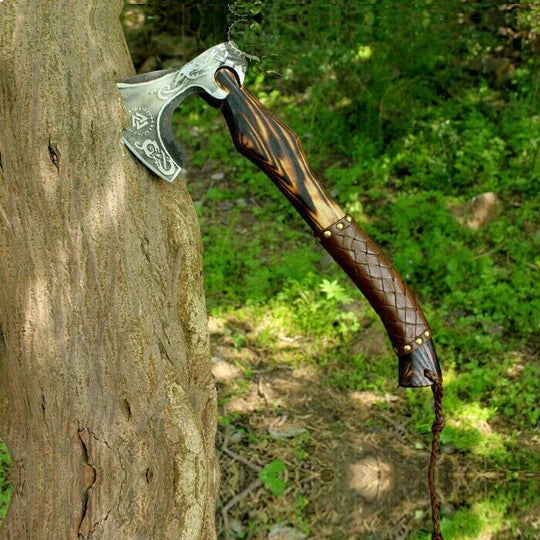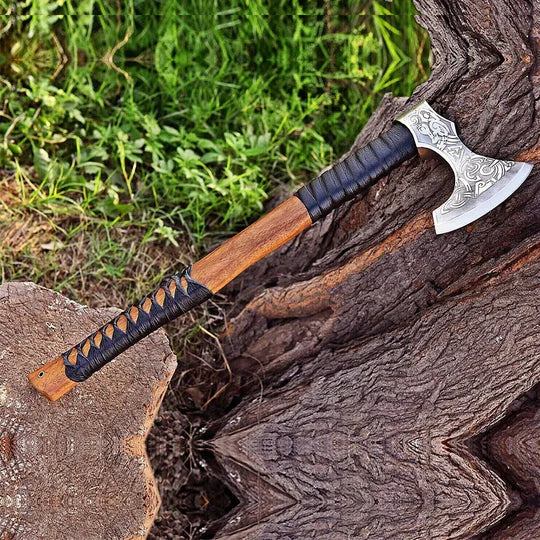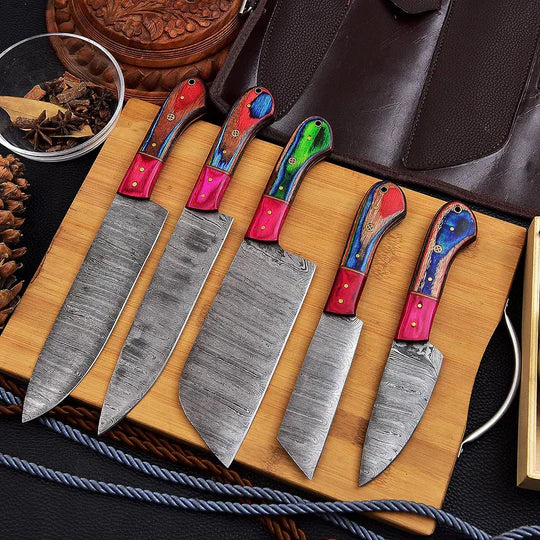Introduction
Handmade Viking axes represent more than just tools; they are symbols of craftsmanship, heritage, and the indomitable spirit of the Norse warriors. Crafted with precision and care by skilled artisans, these axes embody the legacy of Viking craftsmanship and continue to captivate enthusiasts and collectors alike. Let's delve into the intricate craftsmanship behind handmade Viking axes and uncover the secrets of their enduring appeal.
Heritage of the Norse Warriors
The Viking axe holds a prominent place in Norse history and culture, serving as both a weapon of war and a tool for daily tasks Renowned for their craftsmanship and martial prowess, the Vikings wielded axes with skill and ferocity, earning a fearsome reputation on the battlefield Handmade Viking axes pay homage to this rich heritage, preserving the traditions and techniques of Viking-era blacksmithing for modern enthusiasts to admire and appreciate.
Traditional Blacksmithing Techniques
Crafting a handmade Viking axe requires a mastery of traditional blacksmithing techniques passed down through generations Skilled artisans meticulously forge each axe by hand, using techniques such as hammering, shaping, and heat treatment to shape the metal into its final formThe forging process imbues each axe with strength, durability, and a distinctive character that sets it apart from mass-produced counterparts.
Unique Designs and Features
Handmade Viking axes come in a variety of designs, reflecting regional variations and individual artisan styles Common features include a wide, curved blade with a bearded edge, a long handle for leverage and control, and intricate detailing such as decorative etching or carving Artisans may incorporate traditional Norse motifs, such as runes, knotwork, or animal motifs, into the design, adding a touch of authenticity and cultural significance to each axe.
Quality Materials and Construction
Handmade Viking axes are crafted from high-quality materials chosen for their strength, durability, and aesthetic appeal Blades are typically made from carbon steel or tool steel, known for their hardness and edge retention, while handles may be crafted from hardwoods such as ash, hickory, or oak Attention to detail and craftsmanship is evident in every aspect of construction, from the precision grinding of the blade to the smooth finish of the handle.
Versatility and Utility
While revered for their historical significance and craftsmanship, handmade Viking axes are also functional tools with practical applications Whether used for woodworking, chopping firewood, or reenactment purposes, these axes excel in tasks requiring precision, strength, and control The balance and ergonomics of handmade Viking axes make them comfortable to wield for extended periods, allowing users to tackle tasks with confidence and efficiency.
Enduring Appeal and Legacy
Handmade Viking axes continue to capture the imagination of enthusiasts and collectors worldwide, serving as tangible reminders of a bygone er- Beyond their practical utility, these axes evoke a sense of adventure, exploration, and connection to the past, inspiring admiration and fascination among those who appreciate craftsmanship and historyAs symbols of Viking culture and craftsmanship, handmade Viking axes carry with them a legacy of resilience, ingenuity, and the enduring spirit of the Norse warriors.
Conclusion
Handmade Viking axes are more than just tools; they are expressions of craftsmanship, heritage, and cultural identity. Crafted with skill and dedication by artisans steeped in tradition, these axes embody the spirit of the Norse warriors who wielded them centuries ago. With their unique designs, quality construction, and enduring appeal,
handmade Viking axes continue to captivate enthusiasts and collectors, serving as cherished artifacts that bridge the gap between past and present.








